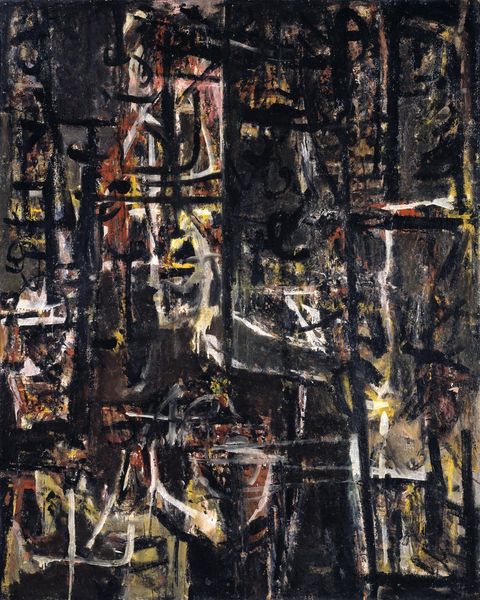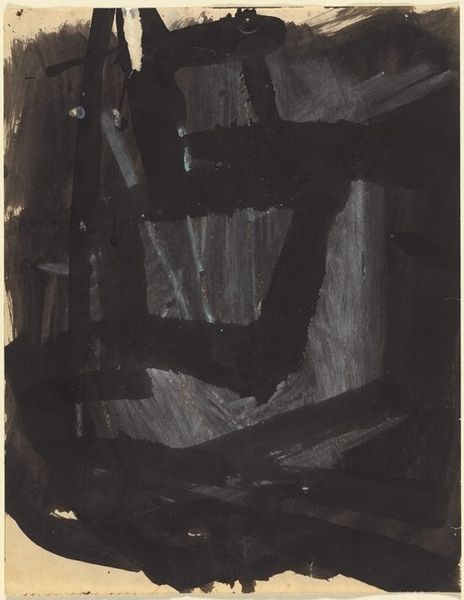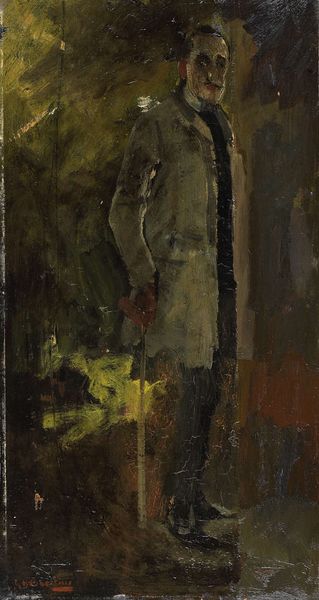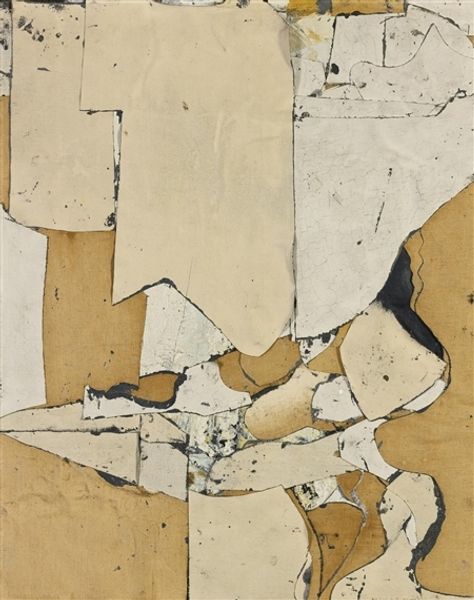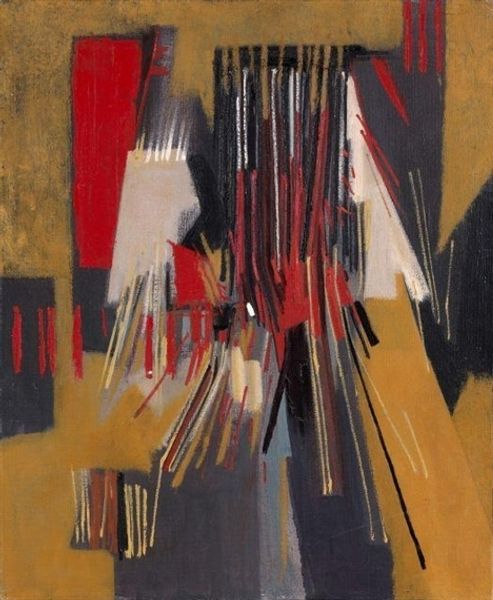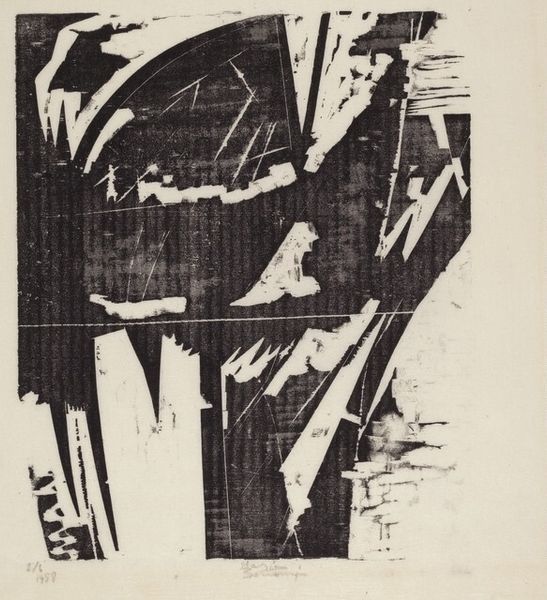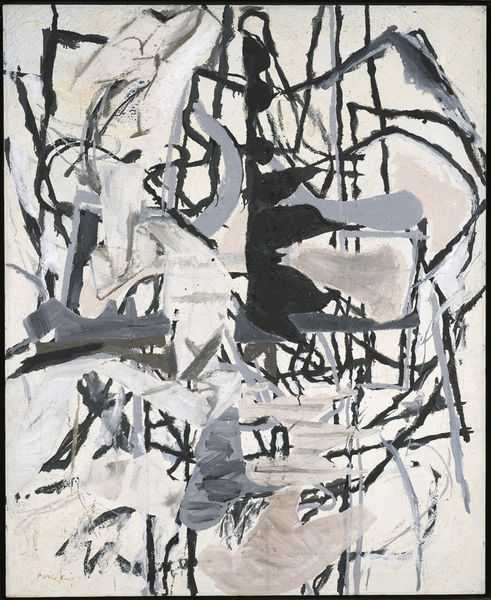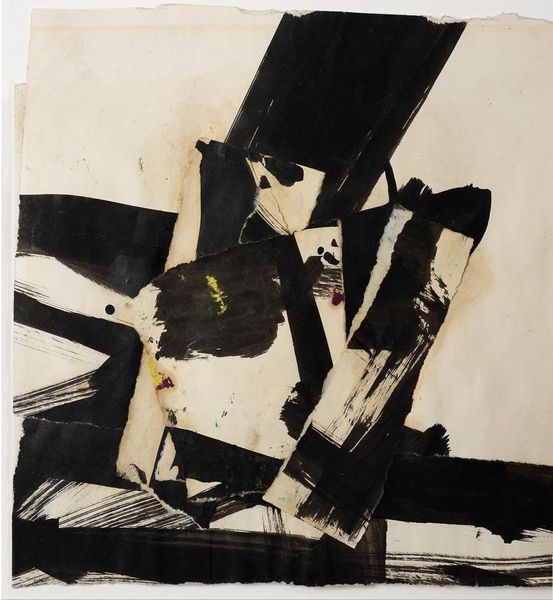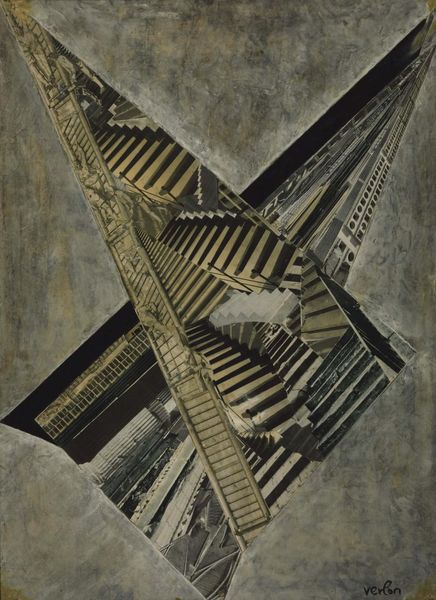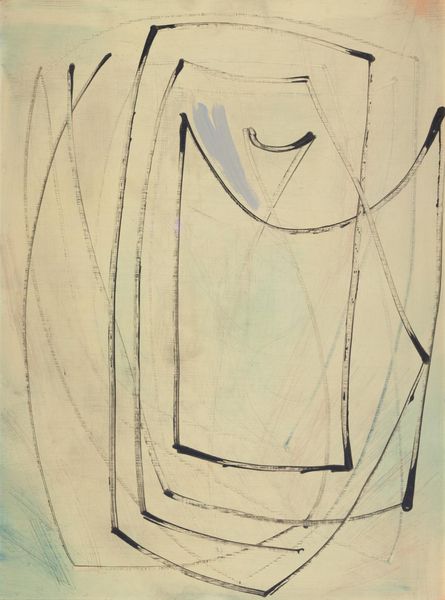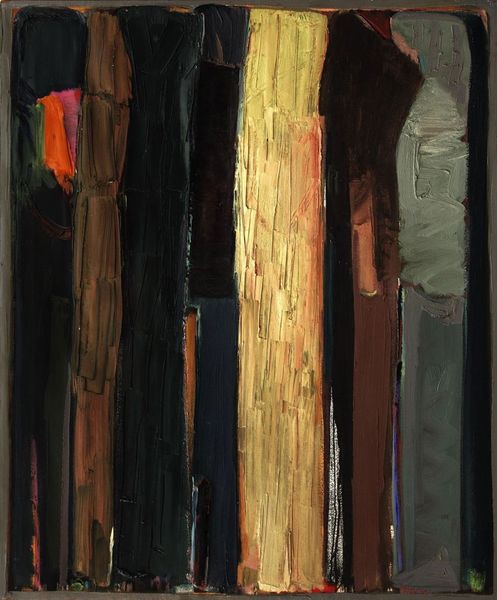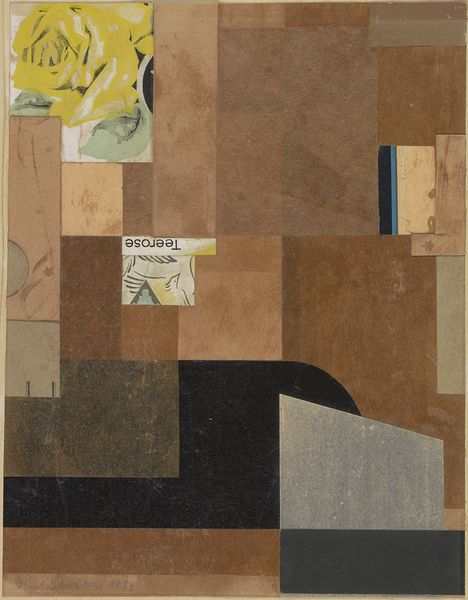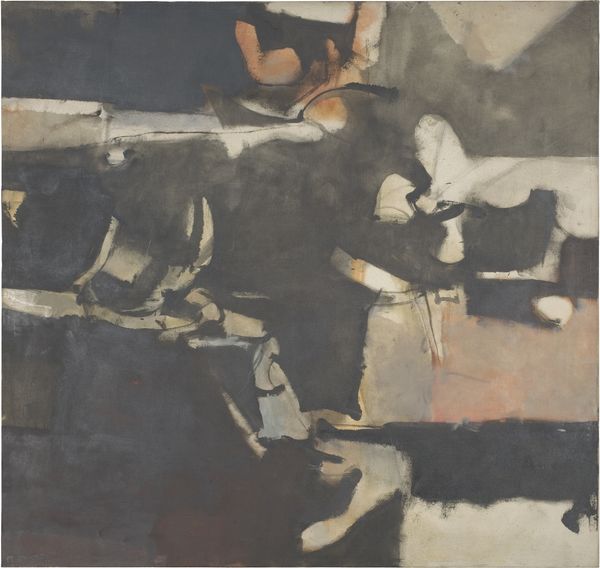
oil-paint
#
abstract-expressionism
#
abstract painting
#
oil-paint
#
form
#
oil painting
#
geometric
#
abstraction
#
line
Copyright: Alekos Kontopoulos,Fair Use
Editor: We’re looking at Alekos Kontopoulos’ "Drawing in black and white" from 1962, done in oil paint. The contrast is so striking, with the stark black background making the lighter shapes almost vibrate. What do you see in this piece? Curator: I see a dialogue between order and chaos, a visual push and pull. The geometric forms, the lines…they suggest a structured space, almost architectural. But the way they intersect and fragment, and the stark tonality, that evokes something much more volatile, maybe even a kind of inner turmoil. Do you see how the dark spaces frame the shapes? What feelings does it trigger in you? Editor: It does feel like a controlled explosion. I notice how those darker spaces seem to encroach on the lighter areas. Like a hidden force is consuming the shapes. Curator: Precisely. Consider the period it was created, 1962. What anxieties or social currents might be mirrored in that tension? Think about the Cold War, abstract expressionism grappling with representation... It becomes a symbol not just of form, but of a deeper unease within the cultural landscape. What’s especially interesting is that geometric shapes are often perceived as symbols of order. The fragmentation subverts that established symbol. Editor: So, the artist takes these recognizable symbols, these forms, and turns them on their head to communicate something more complex. It is more than abstract expressionism. It is about the human experience. Curator: Exactly. It is also about what is remembered. A deconstruction can reflect the destruction of memory itself. It makes one wonder about the artist’s intent behind choosing that form as subject. We're seeing not just abstraction, but a visual language wrestling with societal anxieties and the instability of memory itself. Editor: It gives me a lot to think about – how an abstract piece can be so deeply rooted in a specific moment. Curator: And how symbols carry resonance across time, transforming with each viewer and each context.
Comments
No comments
Be the first to comment and join the conversation on the ultimate creative platform.
